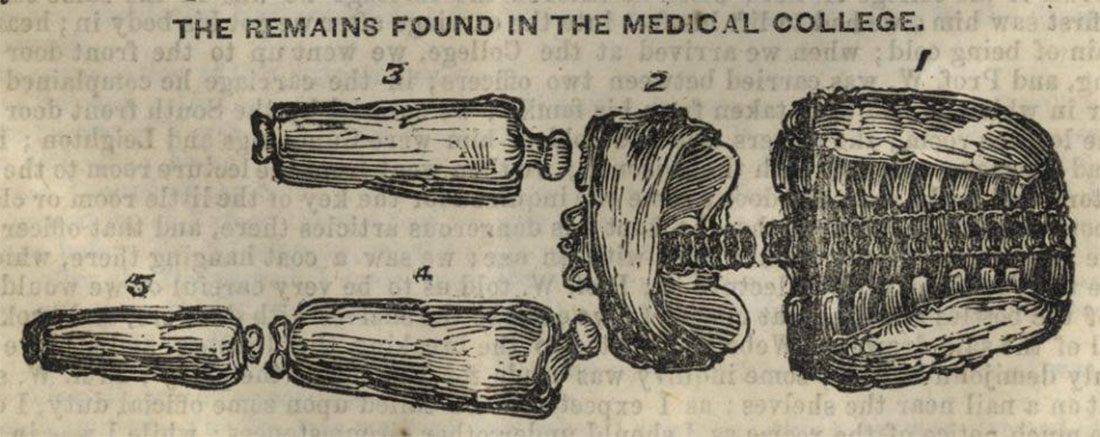
(150 meters wide)
EXTERIOR
- Building is on 10-foot high stabilizing stilts.
- Mostly made out of white plasteel. The windows are clear plastic with protective metal blinds on the outside.
- Bundles of cable run from the Research Hab around the perimeter of the crater to the Security HQ.
- These contain hardwired camera and communication feeds.
SURVEILLANCE
- Every room including the private quarters are monitored with standard audio/video feeds. The sensory feeds are hardwired to the Security HQ.
- Chemical sniffers and radiation detectors in the labs (areas 5-12).
AREA 1 – CENTRAL CORRIDOR
Generally only the door facing the crater is used. (The building is prefabbed.)
AREA 2 – MESS
Cheap, one-piece plastic chairs and tables secured to the floor using solid adhesives.
The fabber here has broken down. Canned goods are being fabricated in the Security HQ and then carried over here.
AREA 3 – RESEARCHER QUARTERS
For security purposes, these chambers are kept extremely depersonalized. (Security monitors this using the sensory feeds.)
AREA 4 – CARLYLE’S QUARTERS
The security feed for Carlyle’s quarters have been compromised: Carlyle’s muse is feeding false data to make everything appear normal.
BED: The bed is affixed to the ceiling. (Carlyle melted the solid adhesive bonding it to the floor and then secured it to the ceiling.)
- A nest of bedding has been huddled up on the floor beneath the bed.
TABLE: A table has been magnetically attached to the wall. The surface of the table is covered in a multi-colored mélange of scrawled symbols and diagrams.
- UNDER THE TABLE: If the table is removed from the wall, a tiny diorama will be found glued to the wall in the hollow space beneath the table’s central pillar. The diorama is a replica of the asteroid dome (area 8 of the Research Spike), including, most notably, a replica of the crystal-like extrusion which appears to be smeared with blood.
- SCRAWLS: If each color of ink is separately extrapolated as a layer of data, they are revealed to be star charts. Specifically, they are constellations as viewed from the Martian sky directly above the Research Spike, with each layer of color representing an epoch of time progressively farther in the past. (Starting 50,000 years ago and increasing to 500,000,000 years.)
AREA 5 – LAB SECURITY CHAMBER
BRAINSCANNING: Access to the labs requires identification verification using a portable brainscanner (Panopticon, pg. 152). A set of six chairs line the room, allowing an entire lab team to be processed simultaneously.
- This process is monitored by the Research AI.
HAZMAT SUITS: 12 hazmat suits hang in individual sterilizing chambers.
AREA 6 – SAMPLE STORAGE
This room contains a number of freezers and shelving units with individual components formed from self-sealing smart materials.
- Usually used for storing scientific samples, but the only samples currently being held here are a number of soil samples extracted from the surrounding terrain.
- Most of the storage space is going unused.
BURN UNIT: The room also contains a sterilizing burn unit suitable for destroying toxic or dangerous materials.
- This unit vents to a containment unit which can either be sealed and removed or vented to the outside atmosphere.
AREA 7 – GENERAL LAB
Fully-stocked laboratory suitable for general scientific study, but it’s going essentially unused on the current project.
RESEARCH AI: Research AI is running off a server in this room.
AREA 8 – DECONTAMINATION CHAMBER
The full decontamination process takes 2 minutes.
STEP 1: NANODETECTORS: In the ceiling, suck air out of the chamber for analysis.
STEP 2: DECONTAMINATION MIST: To unprotected biomorphs, this acts as a toxin that causes eye irritation and difficulty breathing. 1d10 damage, -30 modifier to sight-based Perception tests, and a -20 modifier to all other actions.
STEP 3: NANOSWARM – MICROBIAL CLEANERS: Released into the room.
AREA 9 – SUPPLIES
This room contains supplies for the laboratories. It notably includes:
- Nanodetectors
- Nanoswarm – Scientific Nanoanalyzer
- Specifically designed to analyze compounds down to a molecular level.
- Nanoswarm – Cleaner
- Specimen Containers
AREA 10 – SOIL LAB
SAMPLES: The samples have been carefully tagged with the GPS locations where they were picked up (mostly from within the crater, but also samples up to 3 km away from the crater).
REPORTS: Stored on the local servers.
- No foreign matter was found in the ejecta, which would suggest that whatever impacted in the crater didn’t vaporize or suffer structural disintegration of any kind. (This is extremely unusual for an impact crater.)
- The 3D map of the asteroid dome (area 8, Research Spike) prepared by the scourer nanoswarms is on file here.
AREA 11 – BIOCHEMICAL LAB
WORK: The primary work here was an effort to replicate and map the DNA traces from the silver-black oil taken from the asteroid.
SILVER BASILISK SAMPLE: A small sample of Silver Basilisk in a diamond-crystal faraday container is kept in the lab’s sample case.
- FARADAY CONTAINER: Gatecrashing, pg. 160. Superconductive charged wires block radio signals, electrical charges, and electromagnetic radiation from getting in or out.
SHREDDED BASILISK: In order to study the complex, interlaced DNA of Silver Basilisk, the researchers have ripped it apart using terahertz lasers and are attempting to individually cultivate the DNA strands. “Shredded basilisk”, however, remains highly toxic due to the fractal nature of the exsurgent virus (which will attempt to reconstitute itself).
- Anyone exposed to shredded basilisk must make a DUR test (DUR x 4 if they have medichines or toxin filters). If they fail, there’s a 10% chance they’re affected as per second generation Silver Basilisk as the shredded basilisk migrates to the brain.
- Otherwise, shredded baslisk inflicts a -5 modifier to COO, REF, and COG per week while simultaneously making the victim suffer extreme hallucinations and act as a focal point for Basilisk Dreams. Half this damage is dealt permanently to the ego (even if it resleeves). If any aptitudes are reduced to zero, the morph is effectively paralyzed and catatonic.
AREA 12 – BIOINFORMATICS LAB
WORK: This lab is using biological data analysis techniques to study the interactions, functions, and properties of the X-91 oil.
TISSUE SAMPLES: They’ve infected three major sequences of stem-cell-derived microbiological tissue with X-91 oil. (Each sequence consists of thousands of closely related samples that have had their DNA altered only slightly one from the next in an effort to analyze variant interactions with the oil.)
- All of these are potential infection vectors for Silver Basilisk (although a character can make a DUR test or a DUR x 3 test if they have medichines or toxin filters).
SECURITY MONITOR: This room has access to the surveillance feeds from the asteroid dome (Research Spike, area 8).
- This allows the researchers to remotely observe and study the X-91 asteroid.
REPORTS: Stored on the local servers.
- The X-91 oil appears to use a partially synthetic cell structure featuring incredibly complicated systems of intracellular communication using a protean peptide (which is constantly changing its shape and apparent function according to principles and stimuli that the researchers have been unable to fully identify).
- There are macro-level reactions in the “anomalous large cells” of the X-91 structure which appear to be in reaction to the presence and proximity of specific individuals. This has made isolating micro-interactions difficult.
- Instructions have been prepared to begin testing on animal subjects when their work moves to a larger facility.
















